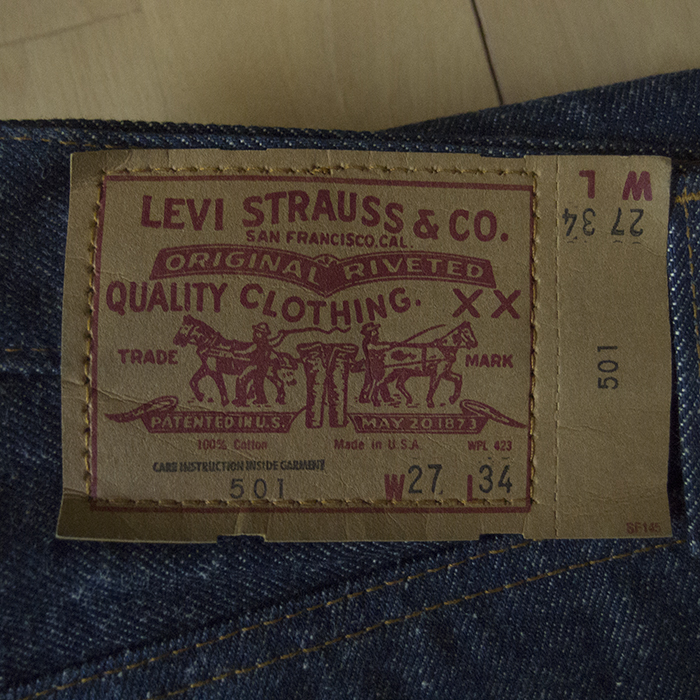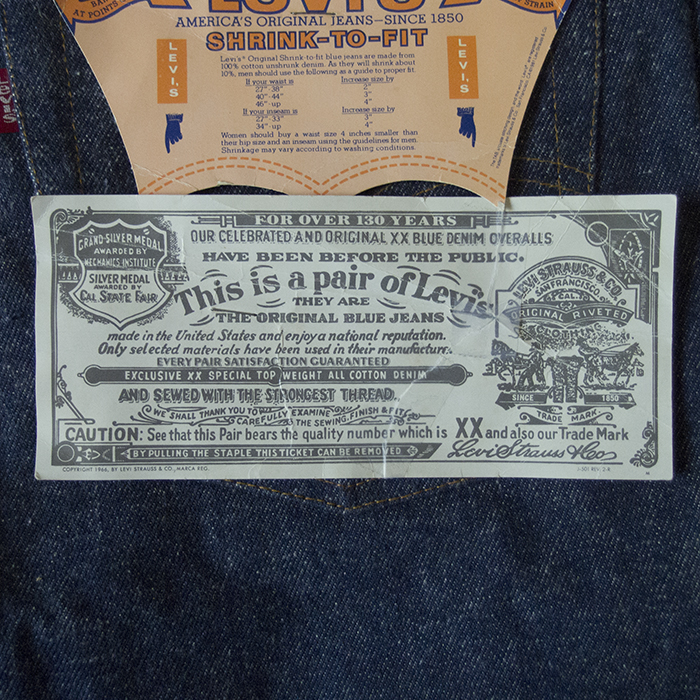Around the time Cone Mills stopped making denim with selvedge in 1983, 501 also changed to one without selvedge. This one is one of the relatively early non-selvedged 501s of the 1982 and 1980s, and is called "a black bar tack" because of the black thread used to the bar tacks. From the late 1970s onwards, the quality of the yarn and weave was improved by the introduction of open-ended spinning and innovative looms, and the production efficiency and product stability were improved, but people at that time probably didn't expect the vintage denim boom.
The paper patches with tear-off tags and the flasher design are no different from the 66 model or the red ears.
paper patch
It's a paper patch with Care stamped tear-off tabs, no different than the 66 model or red ears.
flasher
The center section has been changed from the red-ear era to describe how to choose a waist and length size. The year of copyright acquisition is not listed, but those made in November 1982 will be listed as 1982.
inner tag
The number "02 82 555" indicates that it was made in November 1982 at Plant 555 (Valencia).
bar tack
The earliest of the non-selvedge have black bar tack and are known as "kuro-kan". After a while longer than this, the color of the bar tack stitches changed.
flybutton
Buttons that are not foot-long R with a pitter-patter between letters. There is no change from the preceding and following.
outseam
It is sewn with a rock sewing machine with white thread. Chain stitching at the hem. The seams are quite misaligned and will likely twist considerably if washed.
| size | waist |
seat | front rise | back rise | thigh | inseam | opening | total length |
| W27/L34 | 28.5 | 38 | 11 | 14 | 11 | 34 | 8 | 43.5 |


















